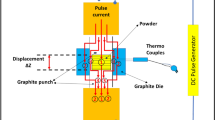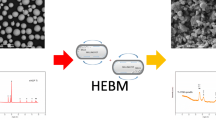Conclusions
-
1.
Use of nonspherical powder granules enables materials to be produced with porosities exceeding those attainable in materials made from powders with a spherical particle shape.
-
2.
The addition of zinc stearate to a starting charge facilitates preservation of intergranular porosity and increases the strength of the porous skeleton.
Similar content being viewed by others
Literature cited
I. M. Fedorchenko and S. M. Solonin, Poroshkovaya Met., No. 7 (1967).
N. P. Sleptsova, S. M. Solonin, and L. I. Chernyshev, Poroshkovaya Met., No. 12 (1968).
F. Clark, Advanced Techniques, in Powder Metallurgy, Rowman, New Jersey (1963).
Author information
Authors and Affiliations
Additional information
Translated from Poroshkovaya Metallurgiya, No. 9(165), pp. 81–83, September, 1976.
Rights and permissions
About this article
Cite this article
Fedorchenko, I.M., Nenakhov, A.V. & Beloborodov, I.I. Sintering and some properties of porous materials from granulated bronze powder. Powder Metall Met Ceram 15, 724–726 (1976). https://doi.org/10.1007/BF01157846
Received:
Issue Date:
DOI: https://doi.org/10.1007/BF01157846




